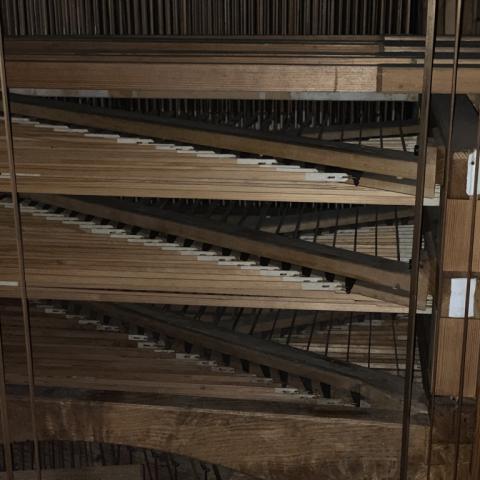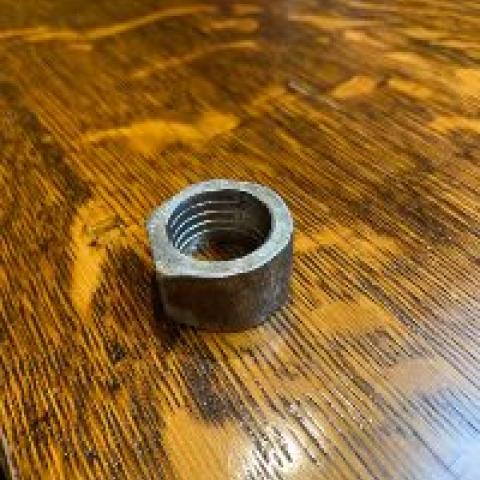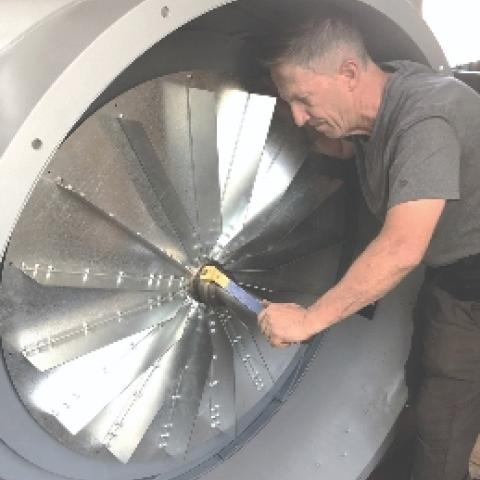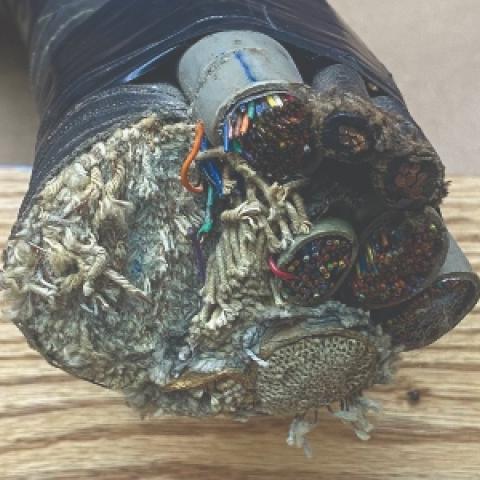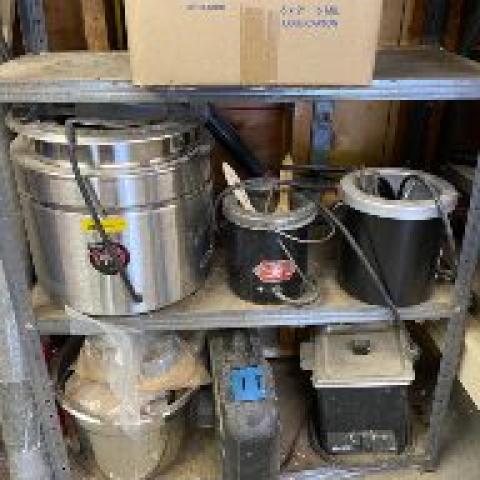
Climate change
The earth’s climate is one of today’s most prevalent hot-button issues. Glaciers are melting, sea levels are rising, and forests are burning. We are experiencing floods where it is usually dry, and droughts where it is usually wet. Heat waves across Europe have devastated crops, threatening food supplies and economies. On July 27, 2022, The Washington Post published a story under the headline, “France’s mustard shortage fuels drama and panic in grocery stores.” L’horreur. Pakistan is underwater. The natural habitats of polar bears and other Arctic creatures are being threatened. Here in Maine, fishermen report that the lobster catch is changing because lobsters are migrating north in search of colder water; lobster populations are diminishing here while they are increasing in Nova Scotia. Scientists warn of the dangers of climate change while doubters deny them.
Worldometers.info reports that the current population of earth is 7.97 billion people. Google tells me that in 1956, the year I was born, there were 2.8 billion people. That is an increase of 6.9 billion or more than two-and-a-half times. I guess zero population growth isn’t a real thing.
Take it indoors.
Our son-in-law is an architect who is focusing on “green” buildings. He is part of a large movement among architects who are researching this field, developing new construction techniques, experimenting with new materials, and working toward houses and commercial buildings that reduce energy consumption while increasing interior comfort. I have had many long conversations with him about my experiences with climate conditions inside the buildings where I have worked on organs.
Stabilizing the temperature and humidity is an essential part of planning and caring for pipe organs. It is a fact that the pitch of any organ pipe is affected and controlled by temperature. We have all been taught to leave the swell shutters open. And why is that? If the shutters are closed when the organ is not being used, an imbalance of temperature will result. If the Swell division is located in the back of the organ against a north-facing wall, the temperature in the swell box will drop, and the Swell will go flat relative to the Great division. If none of the pipes have been handled, when the shutters have been left open long enough for the internal temperature to return to normal, so will the pitch, but it might take days, and that one Sunday the organ would sound terrible.
By the way, the rule about leaving the shutters open typically applies only to organs with mechanical expression actions. The expression motors in most electro-pneumatic-action organs are arranged so the shutters stay open when the blower is turned off, specifically to maintain stable temperatures. One exception to that rule is the large Welte-Tripp organ built in 1929 for the Church of the Covenant, Boston, Massachusetts. The Swell, Choir, Solo, and Echo divisions are all enclosed, and the shutters close when the organ is turned off. I maintained that organ in the 1980s and 1990s and always directed the church to leave the organ blower on overnight before a tuning so the temperatures could stabilize. The blower was a terrific unit with an 880-volt DC motor installed with the organ in 1929. Austin Organs, Inc., renovated the organ in 2001 with significant support from Joseph Rotella and Spencer Organ Company, and Joseph and his people have maintained it since. I asked Joseph if they altered the original setup so the shutters would open when the blower was turned off. He replied:
. . . the shades were not changed when the organ was restored. Typically, we schedule a tuning for the afternoon with a second organ close by in the morning. Thus, we stop in, turn on the organ, make sure the shades are open, and then come back to tune in a couple of hours. Now that the church has radiant floor heating, they leave it the same temperature all the time in the winter, and so the variation is not all that bad. The Solo, however, is pretty bad all the time even after the organ has been on for a while. . . .
I have demonstrated the sensitivity of organ pipes to temperature to church officials by using a simple test. I stand inside the organ with two pipes playing and hold my finger against one of them. It takes just a few seconds for the pipe I am touching to heat up and go sharp. People easily recognize the acoustic beats, starting slowly and growing increasingly faster. The reverse demonstration is much slower—when I remove my finger from the pipe, the slowing of the beats takes much longer. The point is to prove that the effect of temperature on organ pipes is almost instantaneous. (I am a professional. Do not try this at home.)
We heat the church for the people.
Thirty years ago, I maintained a large three-manual tracker organ located high in a rear gallery in a nave with a very high ceiling, arranged so the three divisions were stacked one on top of the next. The Swell was near the floor, the Positiv above, and the Great was at the top of the thirty-foot-tall case. The ceiling was fifteen feet above all that. The difference in elevation of the divisions combined with the immense height of the building meant that the heat needed to be on for a long time for the room to warm up from the top down. There was often a twenty-degree difference in the temperature of the Great and Swell divisions. Once after arriving at the church for a seasonal tuning, I went to the office to report that I would not be able to tune because the heat had not been turned up the night before as I had requested. The pastor overheard me, stormed out of his office, and proclaimed, “We heat the church for the people, not the organ.” I suppose it would have been too much for him to grasp the concept that we tune the organ for the people as we work to make the organ sound as good as possible in preparation for public worship.
I have had the opposite experience, being greeted by the custodian as we arrived to tune the organ, “I’ve got it good and warm in there for you this time.” Their usual weekday setting was fifty-five degrees and Sunday worship setting was sixty-eight. We encountered ninety-five degree heat, which was a bigger discrepancy than if he left the heat off at a cost of who knows how much fuel oil.
When I was curator of the monumental Aeolian-Skinner organ at The First Church of Christ, Scientist (The Mother Church) in Boston (230 ranks), there was a failure of the heating controls. Dr. Thomas Richner, a.k.a. Uncle T., called me late one evening to say, “Peepee (he called everyone Peepee), there’s something wrong here.” I went in the next morning to find that the tuning had shattered. It is quite a job in an organ that size to set “A” of the 4′ to a tuning fork and start over—it has over a hundred ranks of mixtures.
Touch up the reeds.
Tuning the reeds is a common approach to a quick service call. There are two main reasons why the reeds need tuning more often than ranks of flue pipes. Reed pipes have moving parts. The tone is produced by a vibrating brass tongue that is held in place by a wedge that is often made of wood. A stiff and springy bronze tuning wire holds pressure against the tongue, setting its vibrating length exactly to produce the correct pitch. The organ tuner taps the tuning wire up and down, changing the length of the tongue, which alters the pitch. Changes in humidity can cause the wedges to work loose so the tongue slips. The funnel-shaped resonators of reed pipes, especially trumpets and oboes, easily trap insects whose parts wind up caught in the tongue, muting the pipe. These tentative aspects of the speech of reed pipes means they need more attention than flue pipes.
The other reason is that the pitch of reed pipes is not affected dramatically by changes of temperature the way flue pipes are. If the reeds are tuned at Sunday morning temperature and the building cools down when thermostats are lowered, the pitch of the flues drops and the reeds stay the same, giving the impression that the reeds are out of tune. When the heat is turned up, the flues return to their tuned pitch. I have spent my career in the northeast where buildings are heated in the winter and where few buildings have air conditioning. (Today more and more churches are installing air conditioning.)
Christmas and Easter are both winter holidays here, so it makes more sense to have two tunings each year, one when the heat comes on in the fall, the other when it goes off in the spring, rather than focusing on the holidays. That usually means that the pitch of the reeds is changed considerably twice a year, and the tuner must judge whether to use the tuning wires that may loosen the tongues and affect the regulation or to tune on the scrolls at the top of the resonators that will eventually fatigue and break off after years of up in the spring and down in the fall.
Regulating is the process and art of adjusting “louds and softs” in a rank of pipes to achieve an even and flowing scale. Changing the length of a reed’s resonator changes the pitch, so the technique is to open or close the scroll and return the pipe to the correct pitch using the wire. Opening the scroll sharpens pitch, so you flatten on the wire, which increases the tongue’s curve and makes the pipe speak louder. Closing the scroll flattens the pitch, so you tap down on the wire, which decreases the curve and makes the pipe speak softer. This means that the tuner needs to add the question of regulation to the judgment about tuning on the wires or the scrolls. Changing the wires will alter the volume of the pipe. I believe the best approach that preserves the condition of the scrolls and maintains the regulation is to tune on the wires and check regulation after tuning each rank. It is more time consuming, but it is better for the organ. Having said that, one really needs to make this decision based on the organ and the characteristics of the individual stops.
Christmas in June
Brian Jones and the choir of Trinity Church, Boston, made the famous and brilliantly selling recording Candlelight Carols in June of 1990 when I was curator of the double organ there, Aeolian-Skinner Organ Co. Opus 573-A in the chancel and Skinner Organ Company Opus 573 in the gallery. Ross Wood was the organist. The weather was unseasonably warm, and it was downright hot high in the organ. I remember lying on my back in a pew in the wee hours of the morning, listening to the glorious Christmas music. It was surreal. However, the seventy-year-old reeds in the gallery organ, especially in the Solo at the top of the instrument, did not want to tune high enough, and I did not want to open the scrolls of those beautiful pipes for that one occasion. I do not remember specifics, but I do remember that some planned registrations had to be altered to preserve the long-term condition of the pipes, not the first choice of the director and the organist.
I have written before about the lovely Casavant organ, Opus 3140 (1972), at the First Church (formerly First and Second Church) in Boston, which has a contemporary Werkprinzip case with polished tin façade pipes in Great, Rückpositiv, and Pedal. The 1972 sanctuary designed by Paul Rudolph has a window at the top of the roof that runs the length of the roofline. At certain times of the year, the sun shines through the window and progresses across the wide façade at just the time of Sunday worship. I maintained that organ for more than thirty-five years and grew accustomed to how the heated façade pipes went sharp against the internal pipes as the sunlight passed by. It was my job to make a succession of organists aware that when the sun is shining on the façade, they should avoid using the reeds and the couplers. The good news would be that before the end of the service, all would return to normal.
The conviction of convection
For about twenty years, I served as music director for a church in suburban Boston that had a nice three-manual electro-pneumatic-action organ by a local builder installed in chambers on either side of the chancel of the Colonial-style sanctuary. The Swell and Choir chambers were against the south wall of the building, while the Great and Pedal were against the north wall. Sun exposure to the south created disparate temperatures, especially in the winter when the Great side would drop below fifty degrees. Early on, I simply repitched the Great, which had no reeds, twice a year, but I soon found an easier solution. The entry access to both chambers were trap doors in the chamber floors. Leaving the trap doors open allowed the cooler air to fall into stairwells on either side of the chancel, drawing the heated air from the chancel through the grill cloth to warm the chambers.
Many organ technicians install fans or circulating systems with ducts to create artificial convection. In the case of a tall and stacked mechanical-action organ, ceiling fans are a simple and effective way to stir the air so temperatures are constant from bottom to top. You just have to be careful that the fans turn slowly so as not to create a tremolo effect. Remember when you were a kid, amused by how your voice was altered when you spoke into a fan?
Humidity
I have said a lot about temperature, and I will at least mention the effect of changes of humidity on pipe organ pitch. There are a few obvious high points. Years of hot-air heating dries an organ, shrinking wood pipes so stoppers can fall, spoiling tuning and even pipe speech. Windchest toeholes change size, altering the amount of air that can enter the toeholes of organ pipes. Rising humidity can constrict rackboard holes and lift pipes off their toeholes and can constrict the motion of sliders, which can lead to half-open holes and underwinding or stops going completely dead. I mentioned loose wedges in reed pipes earlier.
Science
Neil DeGrasse Tyson, an astrophysicist, is director of the Hayden Planetarium at the American Museum of Natural History in New York City. He is a vocal advocate for science information and education. He is famously quoted as saying, “The cool thing about science is that it’s true whether you believe in it or not.” These comments and stories about the adventures of an organ tuner are based on simple physical facts. When air warms it gets less dense as the molecules spread out, and sound waves travel more quickly so pitch rises. It is a rare organ that does not have foibles and inconsistencies that can alter the instrument’s pitch, and it is usually possible to figure out an exact cause. Finding a logical and inexpensive solution can be elusive—my organ chamber trap doors were as simple as it gets, and it cost nothing to correct the problem.
Karla Fowkes, wife of my friend and colleague, the organbuilder Bruce Fowkes, posted an amusing thought on Facebook. Over cocktails, Bruce was carrying on about temperature, organ tuning, and low humidity causing case panels to buzz, and Karla thought she heard him say “roomidity.” She posted:
Bruce and I are on the patio talking as dusk creeps in and the moon rises. He is talking about organ temps and humidity levels, but I hear “Roomidity” and immediately know this is a great word. All our organbuilder and organist friends cannot help but agree. Roomidity. It’s a thing.
You’re right, Karla. It’s a thing.

